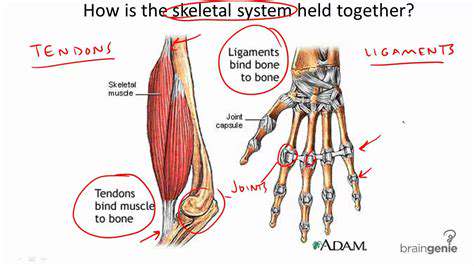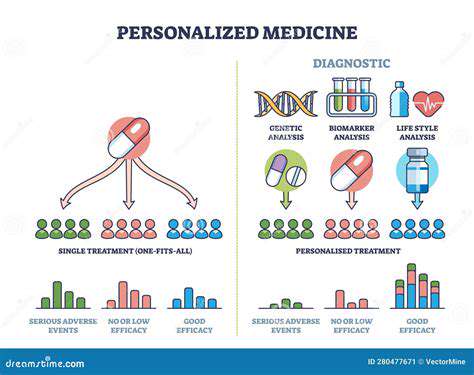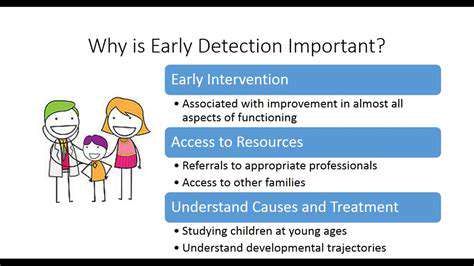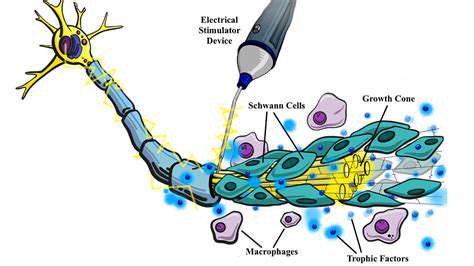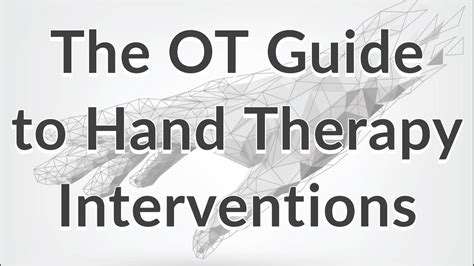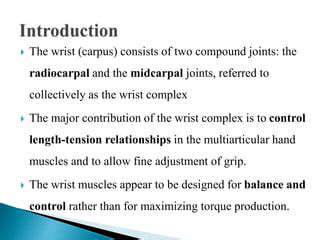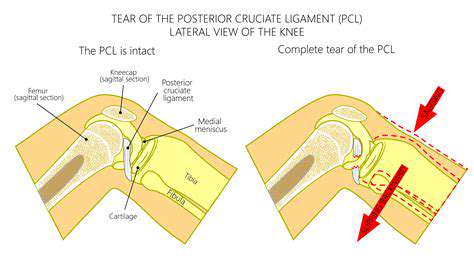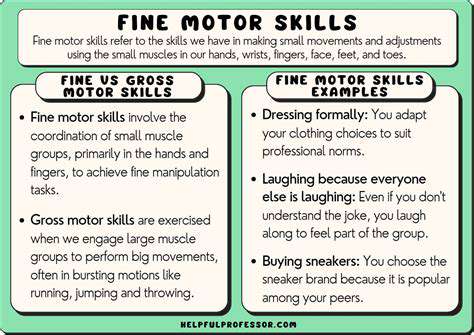Groundbreaking Insights into Finger Nerve Function
Tactile Receptors: A Deep Dive
Understanding the intricate network of tactile receptors beneath the surface of our skin is crucial to comprehending the complexity of fingertip sensation. These specialized sensory organs, including Meissner's corpuscles, Merkel cells, Pacinian corpuscles, and Ruffini endings, are distributed unevenly across the skin, reflecting the varying sensitivities required for diverse tasks. Each receptor type responds to different stimuli, from light touch and pressure to vibration and sustained deformation, providing a rich tapestry of sensory information that our brains interpret as textures, shapes, and forces.
The density of these receptors plays a significant role in the exquisite sensitivity of fingertips. High concentrations of these receptors, particularly Meissner's corpuscles, allow for the precise detection of subtle variations in texture and pressure, crucial for tasks such as playing musical instruments, sewing, or writing. This intricate arrangement ensures a rapid and detailed sensory input, forming the foundation for the nuanced perceptions we experience.
Neural Pathways: From Skin to Brain
The sensory information gathered by these receptors is not simply transmitted; it's meticulously processed along complex neural pathways. Nerves carry signals from the fingertips to the spinal cord, where they synapse with other neurons. These signals are then relayed to the brain's somatosensory cortex, a region dedicated to processing tactile information. This intricate relay system ensures that the brain receives a detailed and accurate representation of the stimuli experienced by the fingertips.
The brain's interpretation of this sensory input is not passive. It's a dynamic process that is influenced by prior experience, attention, and even emotional state. The pathways involved are highly adaptable and plastic, meaning they can change and refine their function based on our interactions with the world, fostering a continuously evolving sensory experience.
Sensory Adaptation and Perception
Our sensory systems are not static; they adapt to the stimuli they receive. This process, known as sensory adaptation, allows us to filter out irrelevant or unchanging information, enabling us to focus on new or changing stimuli. In the context of fingertip sensation, adaptation is vital for maintaining sensitivity to subtle changes while ignoring constant pressure. This allows us to concentrate on the dynamic aspects of touch, such as the feel of a rough surface or the subtle changes in pressure when manipulating an object.
The brain plays an active role in shaping our perception of touch. This involves integrating the sensory information from the fingertips with our prior knowledge, motor commands, and even our emotional state. This integration is a crucial aspect of how we perceive the world around us and interact with objects. It allows us to recognize objects by touch, anticipate their properties, and perform complex manipulations with precision.
The Role of Experience and Learning
The sensitivity of our fingertips is not solely determined by the physical structure of our sensory receptors. Our experiences and learning significantly shape how we perceive and interpret tactile information. Regular engagement in activities that demand fine motor control, like playing a musical instrument or crafting, can lead to increased sensitivity and precision in fingertip sensation. This underscores the importance of practice and experience in refining our sensory capabilities and motor skills.
The Impact of Neurological Conditions
Disruptions to the neural pathways or damage to the sensory receptors can significantly impact the complexity of fingertip sensation. Conditions like nerve damage, peripheral neuropathy, and certain neurological disorders can result in reduced sensitivity, altered tactile perception, and difficulties with fine motor tasks. Understanding these neurological factors is crucial for diagnosis and developing effective therapeutic strategies to restore or compensate for lost function. This includes exploring assistive technologies and rehabilitation techniques to help individuals maintain their independence and quality of life.
Unraveling the Sensory Pathways: Specific Nerve Fiber Roles
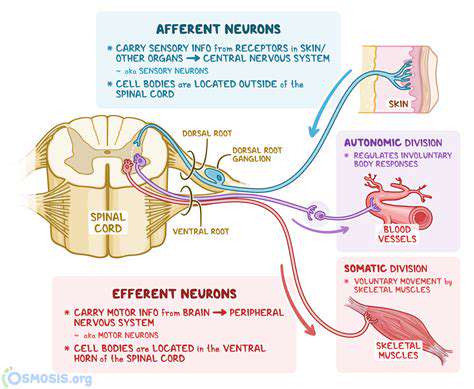
Understanding the Fundamental Principles of Sensory Perception
Sensory perception is a complex process that allows us to interact with the world around us. It involves the detection of stimuli from the environment, the transmission of this information to the brain, and the subsequent interpretation of that information. This intricate process is essential for our survival and well-being, shaping our understanding and experience of the world. This starts from the moment light hits our eyes or sound waves reach our ears, initiating a cascade of events that ultimately result in a meaningful perception.
The Role of Sensory Receptors in Transduction
Sensory receptors are specialized cells that detect specific types of stimuli, such as light, sound, pressure, or temperature. These receptors are crucial because they convert these diverse stimuli into electrical signals that the nervous system can understand and process. The remarkable ability of these receptors to translate physical energy into neural impulses is a fundamental aspect of sensory perception. This process, known as transduction, is the cornerstone of how our senses function.
The Journey of Sensory Information to the Brain
Once sensory receptors convert stimuli into electrical signals, these signals are transmitted along specialized nerve pathways to the brain. This intricate network of nerves acts as a sophisticated communication system, relaying information at remarkable speeds to various processing centers within the brain. The pathway is highly organized, with specific sensory information travelling along dedicated neural routes to the brain, ensuring efficient and accurate processing.
Central Processing and Integration of Sensory Data
Within the brain, the sensory information undergoes complex processing and integration. Different brain regions are responsible for analyzing and interpreting specific types of sensory information. This integration is crucial for creating a coherent and meaningful representation of the world around us. For example, visual information is processed in the occipital lobe, auditory information in the temporal lobe, and tactile information in the parietal lobe.
The Impact of Sensory Experience on Perception
Our sensory experiences significantly shape our perceptions. Early sensory experiences can have a profound impact on how we perceive the world later in life. This includes the development of our perceptual skills, as well as the formation of our individual sensory preferences. Our experiences act as a constant feedback loop, refining our sensory pathways and influencing how we interact with the environment. Furthermore, cultural factors can also play a role in shaping perceptions.
The Interplay Between Different Sensory Modalities
Our senses do not operate in isolation; they often interact and influence each other. For example, the sense of smell can significantly influence our perception of taste. This interplay between sensory modalities is crucial for creating a comprehensive and nuanced understanding of our surroundings. This complex interplay allows us to experience the world in a rich and multi-dimensional way. The integration of sensory information from different modalities provides a more complete picture of the environment.
The Potential for Sensory Deficits and Disorders
Sensory deficits and disorders can significantly impact an individual's ability to interact with the world. These conditions can range from mild impairments to severe disabilities, impacting daily activities and quality of life. Understanding the underlying mechanisms of these conditions is crucial for developing effective diagnostic and therapeutic strategies. From vision loss to hearing impairments, these conditions highlight the importance of maintaining healthy sensory function.
The Role of the Nervous System in Fine Motor Control
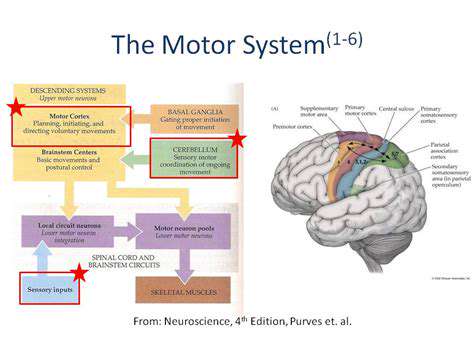
The Central Nervous System: Command Center
The central nervous system (CNS) acts as the command center of the body, processing information and coordinating responses to stimuli. It comprises the brain and spinal cord, intricately connected structures responsible for higher-level functions like thought, memory, and voluntary movement. The brain, in particular, is a marvel of biological complexity, housing billions of neurons and trillions of connections, enabling a vast array of cognitive processes. Neurons communicate through electrical and chemical signals, forming intricate networks that underpin all aspects of our experience.
The spinal cord serves as a vital communication pathway, transmitting signals between the brain and the peripheral nervous system. It's responsible for basic reflexes and the rapid transmission of sensory information to the brain for interpretation.
Peripheral Nervous System: The Body's Network
The peripheral nervous system (PNS) extends beyond the CNS, reaching every part of the body. It comprises nerves that branch out from the spinal cord and brain, connecting to muscles, organs, and sensory receptors. This intricate network allows for the constant flow of information between the central command and the body's periphery. This constant communication enables us to perceive our environment and react accordingly, from feeling the warmth of the sun to moving a finger.
The PNS is further divided into the somatic and autonomic nervous systems, each with distinct roles in regulating bodily functions. The somatic system controls voluntary movements, while the autonomic system manages involuntary processes like heart rate and digestion.
Sensory Input: Gathering Information
The nervous system's primary function is to gather and process information from the environment. Sensory receptors throughout the body, such as those in the skin, eyes, ears, and nose, detect a wide range of stimuli, including light, sound, temperature, and pressure. These sensory receptors translate external stimuli into electrical signals, which are then transmitted to the CNS for interpretation. This process of sensory input and interpretation allows us to experience the world around us.
This sensory information is crucial for our survival, allowing us to react to potential threats and adapt to changing conditions.
Motor Output: Executing Responses
Once the CNS processes sensory information, it generates appropriate responses. This involves activating motor neurons, which carry signals from the CNS to muscles and glands. Motor output allows us to perform actions, from simple reflexes to complex movements like writing or playing a musical instrument. This intricate system of communication and response ensures our bodies function effectively in a dynamic environment.
The precision and coordination of motor output are essential for maintaining balance, posture, and performing skilled tasks.
Neurotransmitters: Chemical Messengers
Chemical messengers known as neurotransmitters play a vital role in transmitting signals between neurons. These molecules are released from the axon terminal of one neuron and bind to receptors on the dendrites of another neuron, facilitating communication within the nervous system. Neurotransmitters are essential for a wide range of functions, including learning, memory, mood regulation, and motor control. Many different types of neurotransmitters exist, each with specific roles in neuronal signaling.
Homeostasis: Maintaining Balance
The nervous system plays a crucial role in maintaining homeostasis, the body's internal balance. It constantly monitors and adjusts various physiological parameters, such as body temperature, blood pressure, and heart rate, to ensure optimal functioning. Maintaining this delicate balance is vital for survival and overall well-being. The nervous system ensures that these critical functions are efficiently regulated, preventing significant disruptions to the body's internal environment.
Implications for Diagnosis and Treatment of Neurological Disorders
Impact on Diagnostic Accuracy
The groundbreaking advancements in neuroimaging and genetic testing have dramatically improved the accuracy of diagnosing neurological disorders. Previously, identifying the specific cause of symptoms could be challenging and time-consuming. Now, sophisticated MRI techniques, coupled with advanced genetic sequencing, allow for a much more precise identification of neurological pathologies, enabling clinicians to tailor treatments more effectively and expedite the diagnostic process. This increased accuracy translates into earlier interventions, potentially improving patient outcomes.
Furthermore, the ability to pinpoint specific genetic mutations associated with certain neurological disorders allows for personalized medicine approaches. This is particularly crucial for rare and complex conditions where traditional diagnostic methods have fallen short. The potential for early intervention and targeted therapies based on genetic profiles is a significant leap forward in the field.
Personalized Treatment Strategies
The understanding of the underlying biological mechanisms of neurological disorders has led to the development of personalized treatment strategies. Tailoring therapies to individual genetic profiles and specific disease presentations is crucial for optimizing outcomes. This individualized approach considers factors such as the specific genetic mutations, the severity of the condition, and the patient's overall health. This allows for the selection of treatments with the greatest likelihood of success and minimizes the risk of adverse reactions.
Enhanced Monitoring and Prognosis
Advanced diagnostic tools and biomarkers provide clinicians with enhanced monitoring capabilities, enabling them to track disease progression and response to treatment more effectively. This continuous monitoring allows for adjustments to treatment plans as needed, maximizing therapeutic efficacy and minimizing adverse effects. The potential for more accurate prognosis estimations based on these real-time data points is a significant advancement, providing patients and their families with a clearer understanding of the course of the disease.
Improved Therapeutic Targets
The improved understanding of neurological disorders has identified novel therapeutic targets. These targets are often specific to the underlying biological mechanisms of the disease, enabling the development of more effective and less invasive treatments. This focus on precise intervention strategies has led to the development of new drugs and therapies that can directly address the root causes of neurological disorders, potentially leading to disease modification or even cure in some cases.
Ethical Considerations in Application
While these advancements offer immense promise, it's crucial to acknowledge the ethical considerations that arise from their application. Issues such as access to expensive genetic testing, potential discrimination based on genetic predispositions, and the implications for reproductive choices require careful consideration and responsible implementation. Open discussions and guidelines are necessary to ensure that these powerful tools are used ethically and equitably.
Accessibility and Affordability
The cost and accessibility of advanced diagnostic and treatment approaches are critical factors in their widespread adoption. Efforts to reduce the cost of these technologies and make them available to a wider population are essential for maximizing the impact of these groundbreaking innovations. The development of cost-effective diagnostic tools and accessibility programs for treatment are key to ensuring that the benefits of these discoveries reach everyone who could benefit from them.
Future Directions and Research Needs
Future research should focus on expanding our understanding of the complex interplay between genetic predisposition, environmental factors, and the development of neurological disorders. This includes investigating the role of environmental toxins, lifestyle choices, and other factors in disease progression. Further research into the mechanisms of neurological damage and repair is essential to develop even more effective therapies and preventative strategies. Continued investment in research and development is crucial for realizing the full potential of these advancements in the future.
The Future of Finger Nerve Research: Exploring the Potential
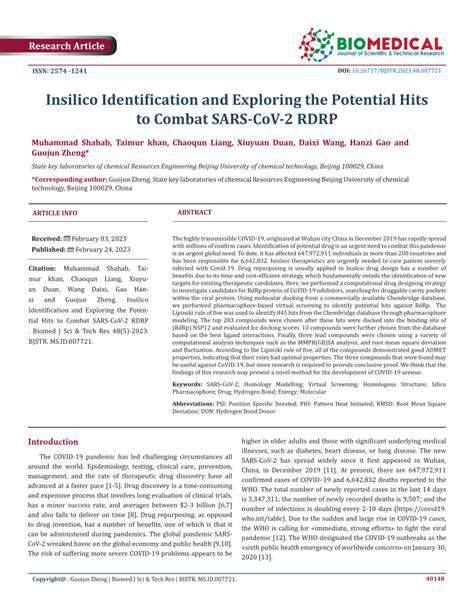
Advancements in Imaging Techniques
Innovative imaging technologies are revolutionizing our understanding of finger nerve function and structure. Advanced MRI techniques, coupled with sophisticated software analysis, are enabling researchers to visualize nerve fibers with unprecedented detail, providing insights into their intricate pathways and connections. This detailed visualization is critical for understanding complex nerve injuries and guiding more precise surgical interventions. Further advancements in 3D imaging will allow for even more comprehensive analysis and modeling of nerve networks.
Furthermore, the development of functional MRI (fMRI) techniques promises to reveal real-time nerve activity. This capability will be invaluable in understanding how nerves respond to various stimuli, and in assessing the efficacy of different treatment strategies. This real-time monitoring can lead to more personalized treatment plans and improved patient outcomes.
Genetic Factors and Nerve Development
Research into the genetic underpinnings of nerve development and function is yielding valuable insights. Scientists are identifying specific genes that play crucial roles in the growth, maintenance, and regeneration of finger nerves. Identifying these key genes will pave the way for targeted therapies that promote nerve regeneration and healing after injury. This knowledge will also allow for the creation of more effective diagnostic tools to identify individuals at risk for nerve disorders.
Studies are also examining the influence of genetic mutations on nerve vulnerability to various conditions, such as diabetes and autoimmune diseases. This research is crucial for understanding the complex interplay between genetics and environmental factors in shaping nerve health. These studies could lead to the development of preventative strategies and personalized treatments for nerve-related conditions.
Regenerative Medicine Approaches
Significant progress is being made in developing regenerative medicine techniques to promote nerve regeneration. Researchers are exploring various strategies, including the use of growth factors, stem cells, and bioengineered scaffolds, to encourage the growth of new nerve fibers. These advancements offer hope for restoring function in individuals with nerve damage. This is a major area of focus for researchers, promising to revolutionize the treatment of nerve injuries in the future.
The development of novel biomaterials and biocompatible scaffolds that mimic the natural extracellular matrix of nerves is also essential in this field. These scaffolds provide a supportive environment for nerve regeneration, facilitating the growth and integration of new nerve fibers into the existing network. These developments are creating exciting new possibilities for nerve repair and restoration.
Nanotechnology for Targeted Drug Delivery
Nanotechnology offers exciting opportunities for targeted drug delivery to injured nerves. Nanocarriers can be engineered to deliver specific therapeutic molecules directly to the site of injury, minimizing side effects and maximizing efficacy. This precision targeting can lead to improved nerve regeneration and reduced inflammation. The potential for enhanced and more efficient delivery of drugs to damaged nerves is enormous.
By attaching drugs or growth factors to nanoparticles, researchers can manipulate their release rate and location. This controlled release is crucial for optimizing the treatment response. These developments are poised to significantly impact the treatment of finger nerve injuries and conditions.
Personalized Medicine and Treatment Strategies
The future of finger nerve research also includes personalized medicine approaches. Researchers are working to develop diagnostic tools and treatment strategies tailored to individual patients based on their unique genetic makeup, environmental factors, and specific nerve injury characteristics. This approach promises to optimize treatment plans and improve patient outcomes. It also allows for early detection and intervention, reducing the severity of nerve damage.
Understanding the unique characteristics of each nerve and the individual's response to different treatment modalities will be crucial for developing personalized treatment plans. This approach will lead to more effective and targeted interventions to restore finger function and improve quality of life.
Ethical Considerations and Public Awareness
As finger nerve research progresses, it is essential to address the ethical considerations surrounding these advancements. Issues such as the potential for misuse, equitable access to treatments, and the long-term impacts on individuals need to be carefully considered. Ethical guidelines and regulations should be in place to ensure responsible and beneficial application of these new technologies.
Public awareness campaigns are critical to ensure that the benefits of finger nerve research reach those who need them most. Educating the public about nerve conditions, available treatments, and the importance of early intervention can foster better patient outcomes and reduce stigma associated with these conditions. Engaging the public in discussions about the ethical implications of these advancements is vital for fostering responsible innovation.


